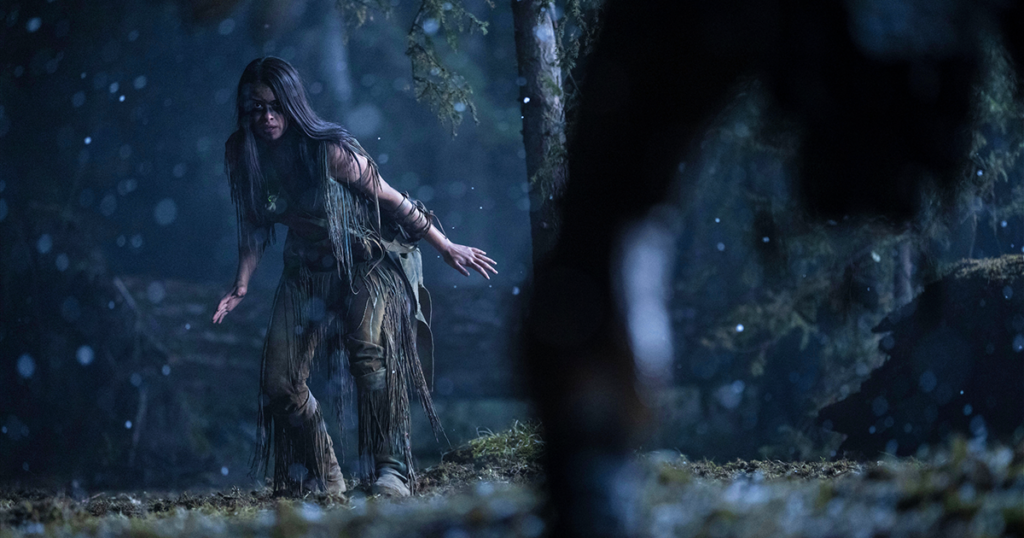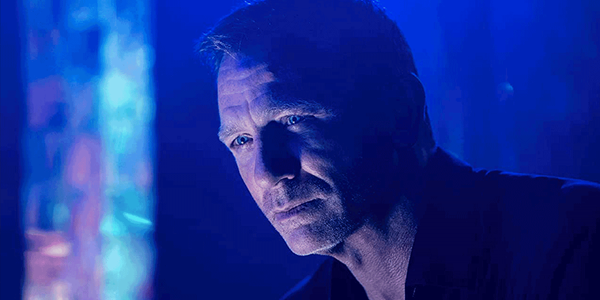
review | Prey
This Predator sequel sets the action in Comanche territory in the early 1700s with surprisingly satisfying results
by John Sciacca
August 11, 2022
I like to think I have my finger on the pulse of upcoming attractions, but—perhaps fittingly—Prey snuck up on me almost out of nowhere. It wasn’t until just a few weeks before its premiere on Hulu that I saw an ad for it while my wife and I were watching Dopesick. Even from the trailer it was clear this was something entirely new and fresh for the Predator franchise, and, man, did it look cool!
The original Predator—from way back in 1987—was a terrific blend of action, sci-fi, and horror, and was a perfect vehicle to pit larger-than-life action hero Arnold Schwarzenegger against an enemy even bigger, badder, and more equipped than himself, locked in a hunt-to-the-death battle of survival in the jungle. While they’ve attempted to reboot, refresh, and relaunch the Predator franchise over the years, none of the sequels came close to matching the original.
Honestly, Prey was so good, I can’t believe it went directly to Hulu and bypassed a theatrical release, and the film had the biggest premiere for any TV show or movie in the streamer’s history. (Interestingly, it debuted on Disney+ in many markets outside the United States. The disappointing thing for US viewers is that Prey on Hulu doesn’t include HDR or Dolby Atmos while the Disney+ stream included both Dolby Vision and Atmos.)
Prey takes place back in 1719 in the Great Plains of North America. While most women in the Comanche tribe tend to things around the camp and welcome warriors back from hunting parties, Naru (Amber Midthunder) wants become an excepted hunter in the tribe. She spends her days mostly alone, practicing her tracking and fighting skills while also gathering medicinal herbs. Her brother Taabe (Dakota Beavers) is the tribe’s Great Hunter, and he doesn’t think she is ready to go on her first big hunt/trial known as a Kuhtaamia, where you hunt something that can also kill you. While out hunting a lion, Naru follows the hunting party, and notices some unusual tracks along with a skinned rattlesnake. When one of the hunting party is killed, Naru is convinced there is something else out there even more dangerous than the lion, and she goes off on her own to track it.
There is so much about Prey that just works. First, it feels authentic. Between the casting, the sets, and the wardrobe, you feel like you’re being dropped into this tribe and watching Naru on her quest to be accepted as a hunter. Second, the pacing knows when to go slow to let you actually come to know the characters and learn about them, and in the case of Naru and her brother, to actually care about them, and to see the Predator adapting to this new world. But it also knows when to put the pedal to the floor and not let up when the action starts. Director Dan Trachtenberg—who also co-wrote the screenplay—showed he knew how to develop slow tension in his debut with 10 Cloverfield Lane, and he deftly handles the build-up to action here. Third, like the original Predator, the plot doesn’t try to get overly complicated. The story doesn’t get bogged down in side plots or distractions, doesn’t try and get overly complicated with MacGuffins, and isn’t trying to offer a social commentary or force in some agenda. It’s simple and focused. Finally, Amber Midthunder is just terrific, cool, and fierce. Her goals and motivations are clear and consistent, she is focused, smart, and her fighting and skills are all believable.
Taken from a 4K digital intermediate, the Hulu stream is in 4K resolution and I thought it looked great. But there were definitely moments when I longed for an HDR grade to deliver more highlights and shadow depth. There were a lot of night scenes lit by torches that were just a bit flatter without HDR and the black levels not as deep and inky, and the Predator’s glowing green blood not as vibrant. Much of the film takes place outdoors, and the color palette is very natural, with lots of browns, tans, and earth tones lit by sunlight and warm red fires, with plenty of greens in fields and trees. Images throughout are sharp, clean, and clear with plenty of detail in the mossy ground cover, leaves, with individual strands of hair visible, along with the leather braids of Naru’s war outfit or fine patterns on clothing worn by French trappers.
Honestly, short of some minor banding at points, I had no qualms over the picture quality, only that I knew it could be even better with the HDR grade. It really just makes me look forward to watching it again when it becomes available in higher quality.
Prey makes a bit of history as the first film to be dubbed in the Comanche language, and Hulu offers the option to watch Prey with the Comanche language dub. I’m a fan of foreign films and don’t mind subtitles, and I thought this would be the best and most immersive way to enjoy it. Unfortunately, this is a dub, meaning that it is pretty clear the mouths and the words don’t match up, which is a bit distracting. And watching this dub required using the subtitles for the English translation. But, unfortunately, engaging subtitles on Hulu turns on all the subtitles, not just the translation. That means that you have to endure things like “(Dog barking),” “(Birds chirping),” and “(Predator growling)” which, on top of the dubbing, was just too much for me to endure.
Unlike the Disney+ stream, Hulu only offers a 5.1-channel surround mix, not the more immersive Dolby Atmos option. Even still, I found the audio to be pretty immersive and engaging when upmixed by my Trinnov processor, though I could tell it was lacking in the depth and dynamics of a TrueHD lossless mix, especially in the bass region. There are tons of little ambient sounds like birds chirping, wind blowing through the forest, or rolling thunder. There are also lots of strong directional cues like hearing Naru’s axe whistling in from the side of the room or hearing the Predator’s clicks move around the sides and back of the room helping you locate where it is even when you can’t see it.
The Trinnov Dolby Surround upmixer also did a terrific job placing sounds overhead, like the Predator’s ship sailing above and scattering dust and debris around the room or flies buzzing overhead as they circle around one of the Predator’s kills or little rattles of objects rubbing together overhead inside Naru’s teepee.
Dialogue remains clear and intelligible, though, similar to the way Steven Spielberg handled Spanish language spoken in West Side Story, the dialogue spoken in French isn’t translated on the subtitle track. The thinking is that Naru doesn’t understand what is being said and so neither should you.
While it is violent, it isn’t overly gruesome, and the camera often pans away, with the most brutal acts happening just out of view.
Prey most closely captures the spirit of the first Predator film, but also manages to put its own spin on the story, being both familiar but also wholly new. I highly recommend watching it, even if it means picking up a subscription to Hulu for the month. Really—it’s that good.
Probably the most experienced writer on custom installation in the industry, John Sciacca is co-owner of Custom Theater & Audio in Murrells Inlet, South Carolina, & is known for his writing for such publications as Residential Systems and Sound & Vision. Follow him on Twitter at @SciaccaTweets and at johnsciacca.com.
PICTURE | The 4K stream on Hulu looks great, but there were moments when an HDR grade would have helped to deliver more highlights and shadow depth
SOUND | The 5.1 audio is pretty immersive and engaging when upmixed but lacks the depth and dynamics of a TrueHD lossless mix, especially in the bass
© 2025 Cineluxe LLC





